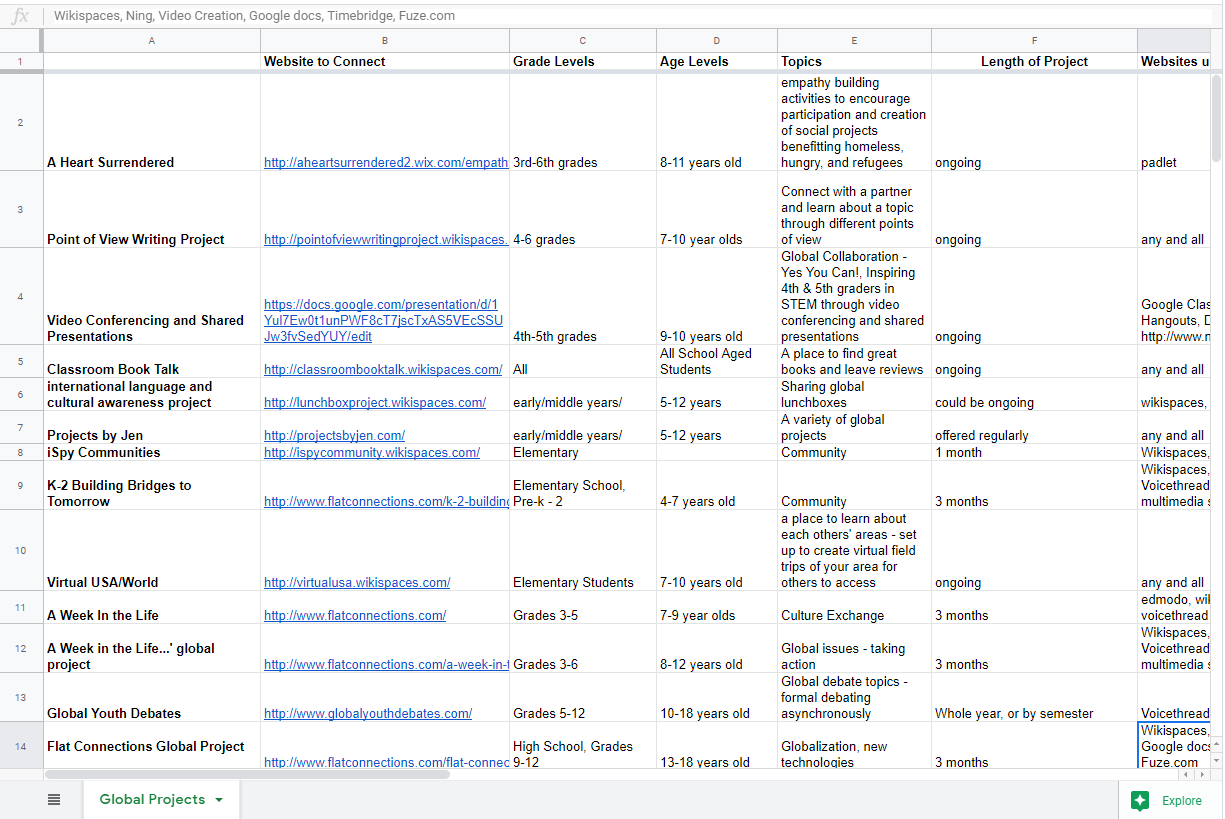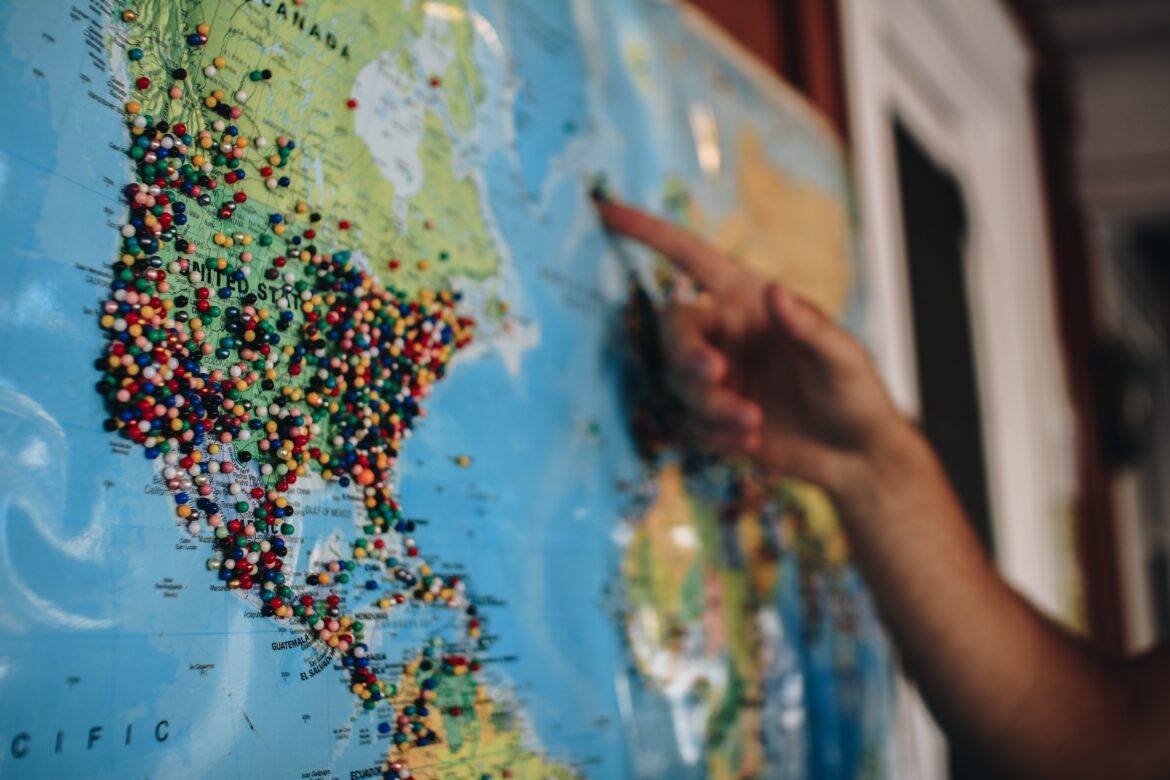“Bring a lesson plan that you love, then we’ll blend technology into it.” I’ve heard this request a thousand times, a way to assist low-tech teachers plan a lesson. As a veteran educator, lesson planning remains a simple way to shift teachers’ focus. Often, the focus of the teacher is on the activities. But good lesson planning forces one to step back and look at the big picture. In this blog entry, we’ll shift our perspective through the use of the ISTE Standards for Students and move from local to global collaboration.
Lesson Planning: A Work of Fiction
Since lesson planning is writing and organizing ideas, I had a lot of fun with it. You might say lesson planning was my first introduction to an idea. The idea? Creative nonfiction, defined as “true stories well told” (source). Lee Gutkind describes it in this way (revised):
“Creative” doesn’t mean inventing what didn’t happen. It is not reporting and describing what wasn’t there. The writer’s pledge to the reader is the anchor of creative nonfiction. That pledge? “You can’t make this stuff up!”
If you wonder, why bring up fiction or non-fiction at all, that’s easy. Lesson plans are works of creative non-fiction. Some go so far to say, they ARE fiction, a waste of time. According to them, the purpose of lesson plans is for some authoritarian administrator to review them. Then the admin will provide helpful suggestions. This supposes that lesson plans are those acts of creative nonfiction. I would argue they are not. And I’m not alone. Consider this perspective:
If you work for a district that doesn’t trust you to plan your own lessons and instead requires you to follow a scripted program with fidelity, then why in the world would you have to write down your lesson plans? They’re already written in the teachers’ guide that you’ve been told to blindly follow. If principals want required lesson plans, then a reasonable question is why. Why should teachers need to rewrite plans that they’ve been handed and told to use?
With the ISTE Standards for Students in mind, how can we shift these perspectives on lesson plans?
Start with the Standards
When you start with the standards in mind, you are stepping back to find greater significance in a lesson. One of my favorite student standards is that of Global Collaborator. In this standard, students use digital tools to broaden their perspectives. They seek to enrich their learning via collaboration with others. This means working in teams at the local and global level. The indicators for Global Collaborator include:
- Student use of digital tools to connect with learners from various backgrounds
- Using collaborative technologies to work with others and examine issues/problems
- Collaborate and contribute in a constructive way as part of a project team
- Investigate solutions to local and global issues
How do you work at the global level? Consider the expectation second grade students might encounter in an actual lesson plan. For example in Fig19F, second grade students must make connections to:
- Their own experiences
- Ideas in other texts
- The larger community and then discuss textual evidence.
How do you make connections to the larger community?
Facilitating Global Collaboration
Ready to make global collaboration possible? In the past, we may have relied on websites like iEARN. While teacher-to-teacher, class-to-class connections are possible, even more opportunities exist. Here are some resources that may assist you in facilitating global collaborations.
Resource #1: GlobalEdGuide
Teachers’ Guide to Global Collaboration: This website encourages the skills students need. They offer rich resources that will give you ideas on how you can bring global collaboration into your classroom. They offer project ideas such as:
- GlobalSpeedChat: #GlobalSpeedChat is a curriculum that includes digital activities to use with your students to build an awareness of others in our world.
- One Day in the Life: This project involves a student image exchange. Students exchange photographs/images describing days in their lives. Then they make cross-cultural comparisons.
- Classroom Conversations: This project matches registered classes with a global partner class (or classes) of the same grade range for an asynchronous VoiceThread conversation.
There are many more projects available at the GlobalEdGuide.org website.
Resource #2: ISTE Connect Global Collaboration Network
It may come as no surprise that ISTE Connect supports global collaborations as well. ISTE Connect seeks to support network and collaboration year-round as a platform for ISTE’s Global Collaboration Network (GCN). The GCN seeks to:
Promote digital technologies for connecting and collaborating beyond the classroom walls. The Global Collaboration Network offers best-practice curriculum design. The design embeds global learning experiences into everyday teaching. The community shares tools and methods, curriculum developments, and opportunities for collaborations.
Connect with Amy Jambor, Anne Mirtschin and Makisha Rogers and see their ISTE 2018 presentation. They encourage the use of Twitter global hashtags, Flipgrid, Voxer, and Voicethread. One example they share is the Winter Around the US slides. See a list of global projects via this Google Sheet:

Shift Perspectives with Global Collaboration
The more connected our society becomes, the more essential global collaboration becomes. It goes beyond building cultural understanding and empathy. Teaming and problem solving with remote collaborators is essential. When you start with the ISTE Student Standards, you can take a broader view of lesson plan activities.
To learn more about how to best use the ISTE Standards, consider becoming ISTE Certified. Our next cohort will begin July 11 and others will be be scheduled in the fall. It’s not too late to register for the ISTE New Zealand cohort, if you happen to be in Queenstown on July 2 & 3rd. Register now.

